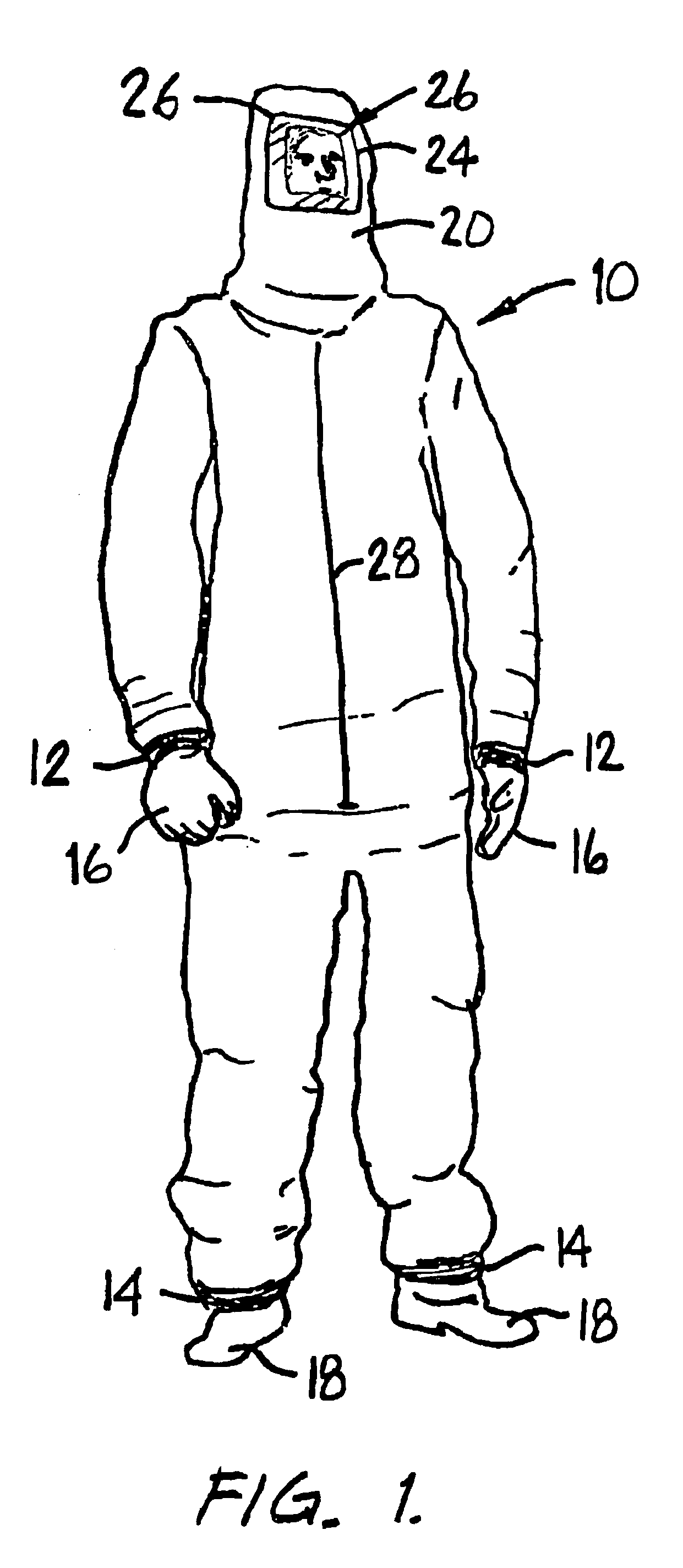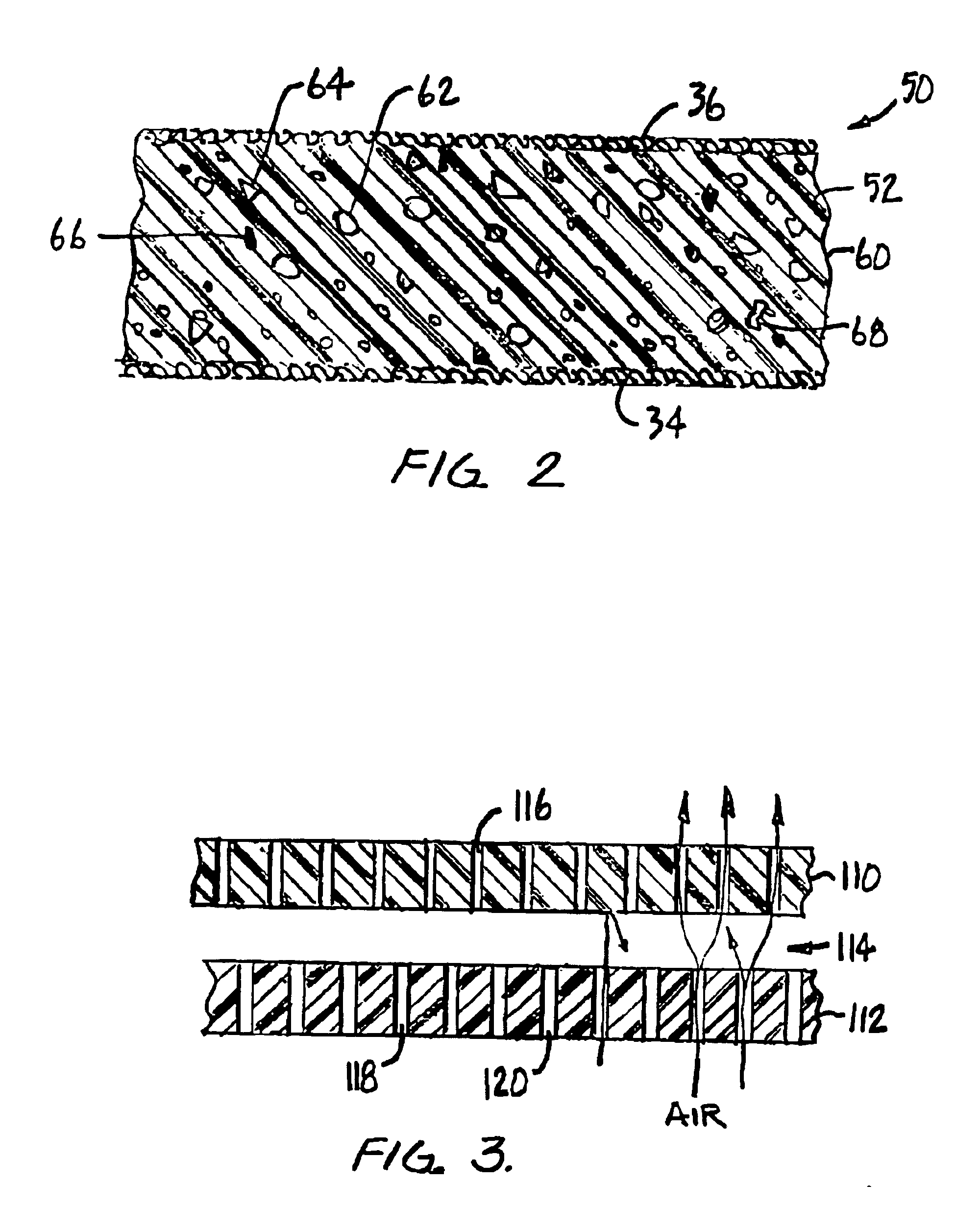Multiple hazard protection articles and methods for making them
a technology of hazard protection and articles, applied in the field of articles, can solve the problems of spreading deadly radiation throughout a metropolitan area, increasing the urgency and difficulty of protection, and serious injury or even death, and achieve the effect of superior heat dissipation
- Summary
- Abstract
- Description
- Claims
- Application Information
AI Technical Summary
Benefits of technology
Problems solved by technology
Method used
Image
Examples
Embodiment Construction
FIG. 1 shows a full body suit 10 which is constructed from hazard protecting fabrics of the present invention. To provide complete surface protection, the full body suit 10 should preferably be a one-piece jumpsuit which covers every portion of the human body. Elastic bands 12, 14 can be used around the hand and foot areas to help insure a tight fit. Alternatively, the gloves 16, booties 18 and hood 20 can be separate pieces which overlap with the rest of the jumpsuit so as to leave no skin surface exposed. The full body suit 10 can also include hook and loop fasteners or a zipper flap 28 to allow the user to easily enter the full body suit 10.
A transparent eye shield 24 is preferably included with the full body suit 10 to provide protection for the face. For convenience, the eye shield 24 could be hinged, such as with corner rivets 26, in order to allow the user to flip the shield 24 up and down. Alternatively, the eye protection can be a stand alone device, such as safety glasses ...
PUM
| Property | Measurement | Unit |
|---|---|---|
| Fraction | aaaaa | aaaaa |
| Percent by mass | aaaaa | aaaaa |
| Percent by mass | aaaaa | aaaaa |
Abstract
Description
Claims
Application Information
 Login to View More
Login to View More - R&D
- Intellectual Property
- Life Sciences
- Materials
- Tech Scout
- Unparalleled Data Quality
- Higher Quality Content
- 60% Fewer Hallucinations
Browse by: Latest US Patents, China's latest patents, Technical Efficacy Thesaurus, Application Domain, Technology Topic, Popular Technical Reports.
© 2025 PatSnap. All rights reserved.Legal|Privacy policy|Modern Slavery Act Transparency Statement|Sitemap|About US| Contact US: help@patsnap.com



